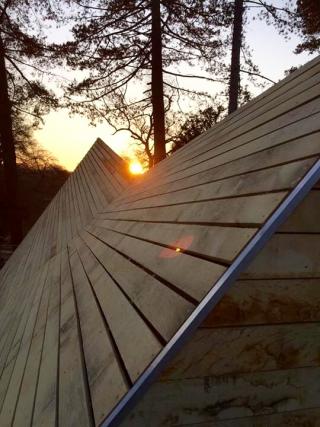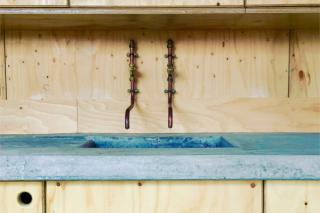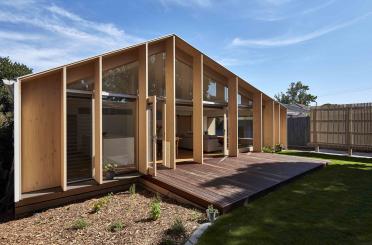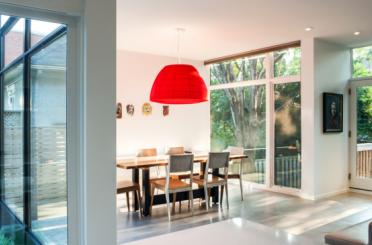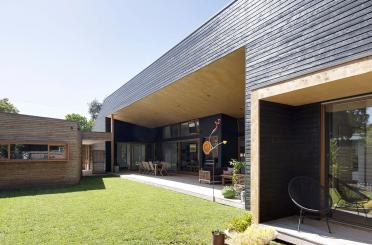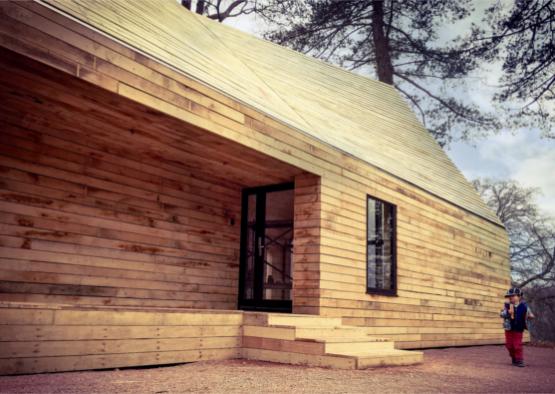
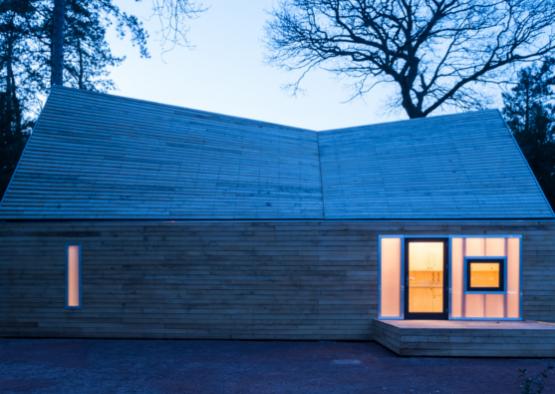
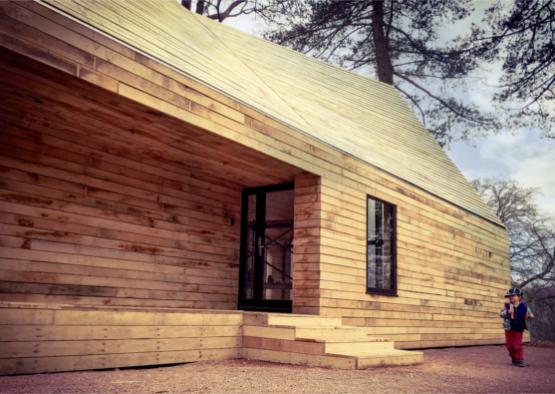
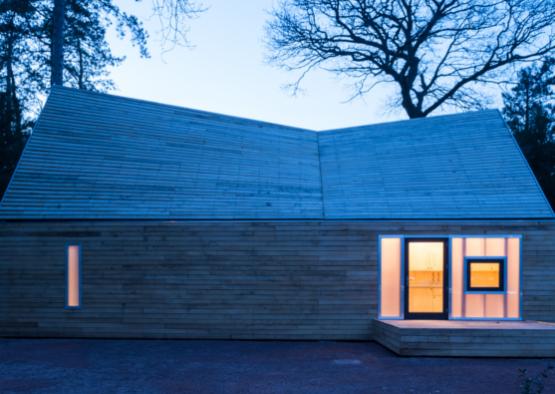
Overview
Invisible Studio was commissioned to build two new buildings for the Wolfson Tree Management Centre in the Westonbirt Arboretum, Gloucestershire, UK. The buildings make up the new tree management centre, comprising of a machinery storage building and a mess hall for the workers at the arboretum. There was a particular focus on using timber from the arboretum, as the client has an extraordinary resource which they had not previously exploited for building. As a result, all the timber was grown and milled on site and used untreated for the construction with no further processing.
Westonbirt Arboretum is a 2.4km² estate, established in the 1850s by wealthy landowner Robert Holford. Now owned by the Forestry Commission, the Grade I-listed landscape, which houses an internationally recognised collection of trees, has been the subject of a £4.3 million programme to regenerate the visitor attraction.
Invisible Studio has an interest in how you can use imprecise materials to make a precise building; something that was explored in this project, which was constructed with volunteers working alongside a skilled contractor.
There were two buildings constructed in this stage of the regeneration project. The first – a tiny mess room – provides space for staff and volunteers to eat and take time out while also including storage and facilities to maintain kit. The second space is a vast timber-framed shed built to house the machinery needed to maintain the estate’s 15,000 trees. Despite having an abundance of trees on its site, Westonbirt’s buildings have rarely been built using them. But in these two buildings Invisible Studio has turned that around.
The mess hall, a little cabin-like building, has an almost fairy-tale quality. Its location was determined by the surrounding trees beneath which it nestles, while its hyperbolic paraboloid roof has been shaped by the winter sun; it was designed so that during the winter months it would allow daylight into the yard behind. Inside it is simple with just two rooms and a loft storage space, all lined in plywood.
Structure
The engineering objective for the design of the buildings was to efficiently use timber from the arboretum, with all processing taking place on site minimising transport and processing costs. Many of the timbers to be used for the structures had not been felled until late in the design process and the design was adapted to suit the material that became available. A dialogue between engineers, architect and the contractor during fabrication of the timber frames facilitated the use of higher quality timber where strength was most critical and in other areas make use of timbers that had not achieved the higher strength grading. This approach allowed the team to efficiently use the materials available.
The use of green timber requires careful consideration in design, in particular around connections where splits, liable to form as the timber dries, can compromise capacity. In addition, the traditional timber connections that were planned to be used are designed to work predominantly in one direction, whereas this structure required significant reversals of loads to be resisted because of uplift forces on the roof. To achieve this, many of the connections were a hybrid of traditional forms, reinforced through modern engineering techniques to ensure additional capacity and robustness.
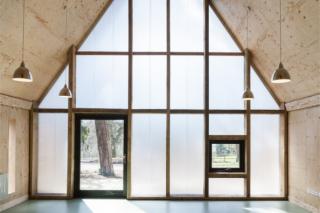
Exterior
The project is a clear progression of Invisible Studio founder Piers Taylor’s work on the Architectural Association’s Design and Make programme at Hooke Park, which he helped to found. The mess building echoes Hooke Park’s Caretaker’s House. Many of the same details are employed: the copper taps, plywood interior, covered entrance and timber cladding.
The scheme also features polycarbonate cladding similar to that which Taylor used on the Big Shed at Hooke Park. On the mess building this forms the scheme’s end wall, letting diffuse light flood into the main space, while on the larger shed-like building it is also used to bring in light and break up the large elevation.
Perhaps what Taylor has learned most from his other projects is how to handle a building that is being constructed by relatively unskilled labour. On the mess building, battens were bought in rather than being milled on site. This allowed them to be used as a setting out for the rest of the building, enabling other elements, such as the cladding, to be more ad hoc. ‘You can’t be precious about detailing when it is being built by volunteers,’ says Taylor. Many of the details were worked out on site and adjusted depending on the natural properties of the timber and the construction work happening around the site.
